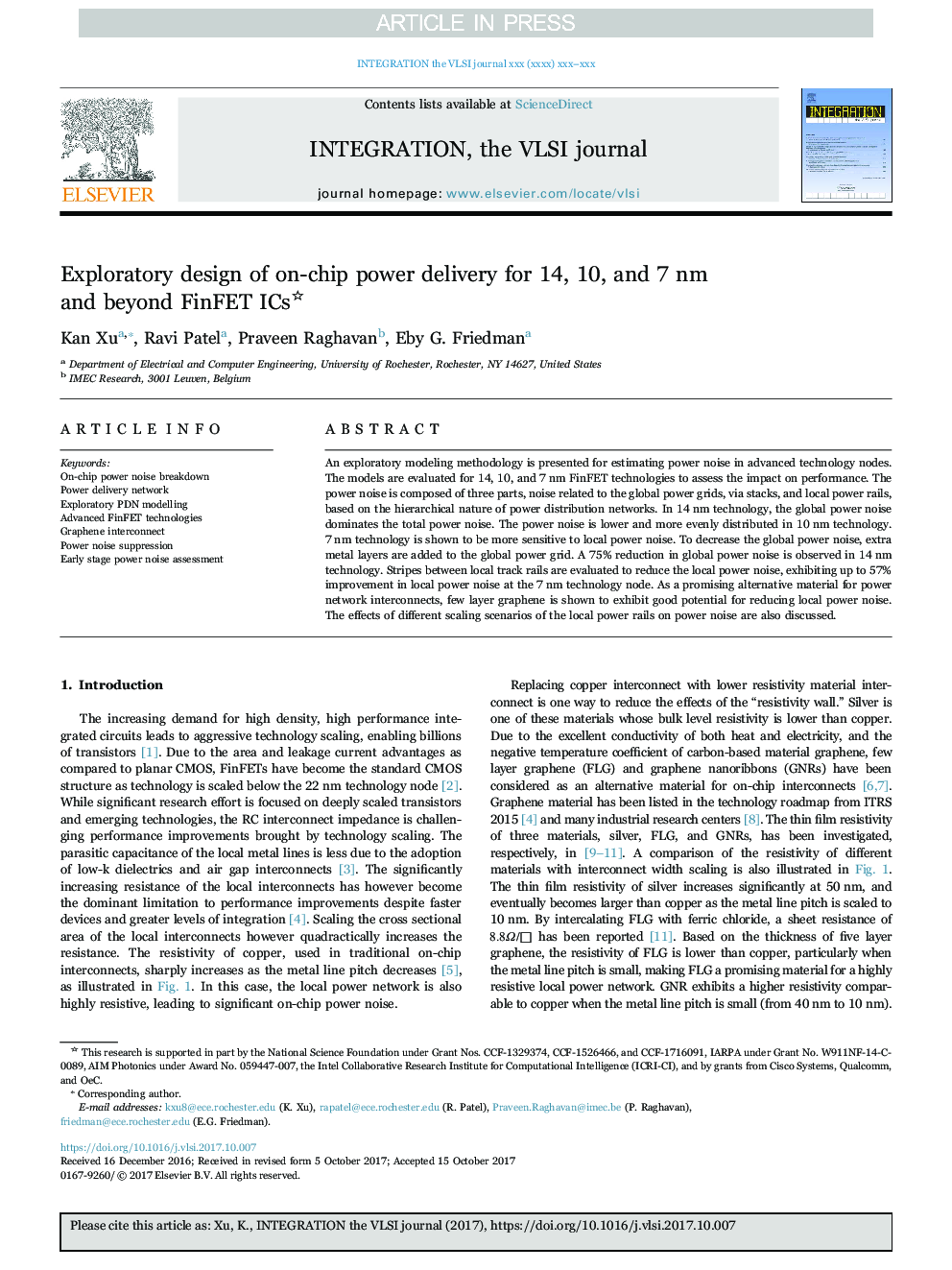| Article ID | Journal | Published Year | Pages | File Type |
|---|---|---|---|---|
| 6942120 | Integration, the VLSI Journal | 2018 | 9 Pages |
Abstract
An exploratory modeling methodology is presented for estimating power noise in advanced technology nodes. The models are evaluated for 14, 10, and 7Â nm FinFET technologies to assess the impact on performance. The power noise is composed of three parts, noise related to the global power grids, via stacks, and local power rails, based on the hierarchical nature of power distribution networks. In 14Â nm technology, the global power noise dominates the total power noise. The power noise is lower and more evenly distributed in 10Â nm technology. 7Â nm technology is shown to be more sensitive to local power noise. To decrease the global power noise, extra metal layers are added to the global power grid. A 75% reduction in global power noise is observed in 14Â nm technology. Stripes between local track rails are evaluated to reduce the local power noise, exhibiting up to 57% improvement in local power noise at the 7Â nm technology node. As a promising alternative material for power network interconnects, few layer graphene is shown to exhibit good potential for reducing local power noise. The effects of different scaling scenarios of the local power rails on power noise are also discussed.
Related Topics
Physical Sciences and Engineering
Computer Science
Hardware and Architecture
Authors
Kan Xu, Ravi Patel, Praveen Raghavan, Eby G. Friedman,
